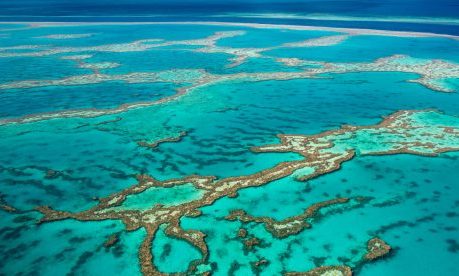For most of its life, the reef was the world’s largest living structure, and the only one visible from space. It was 1,400 miles long, with 2,900 individual reefs and 1,050 islands. In total area, it was larger than the United Kingdom, and it contained more biodiversity than all of Europe combined.
It harbored 1,625 species of fish, 3,000 species of mollusk, 450 species of coral, 220 species of birds, and 30 species of whales and dolphins. Among its many other achievements, the reef was home to one of the world’s largest populations of dugong and the largest breeding ground of green turtles.
The reef was born on the eastern coast of the continent of Australia during the Miocene epoch. Its first 24.99 million years were seemingly happy ones, marked by overall growth. It was formed by corals, which are tiny anemone-like animals that secrete shell to form colonies of millions of individuals. I
ts complex, sheltered structure came to comprise the most important habitat in the ocean. As sea levels rose and fell through the ages, the reef built itself into a vast labyrinth of shallow-water reefs and atolls extending 140 miles off the Australian coast and ending in an outer wall that plunged half a mile into the abyss.
With such extraordinary diversity of life and landscape, it provided some of the most thrilling marine adventures on earth to humans who visited. Its otherworldly colors and patterns will be sorely missed.
To say the reef was an extremely active member of its community is an understatement. The surrounding ecological community wouldn’t have existed without it. Its generous spirit was immediately evident 60,000 years ago, when the first humans reached Australia from Asia during a time of much lower sea levels.
At that time, the upper portions of the reef comprised limestone cliffs and innumerable caves lining a resource-rich coast. Charlie Veron, longtime chief scientist for the Australian Institute of Marine Science and the Great Barrier Reef’s most passionate champion (he personally discovered 20 percent of the world’s coral species), called the reef in that era a “Stone Age Utopia.”
Aboriginal clans hunted and fished its waters and cays for millennia, and continued to do so right up to its demise. Continue reading
Sources
- Outside article by Rowan Jacobsen
- Image: Traveldigg.com
News category: Features.




